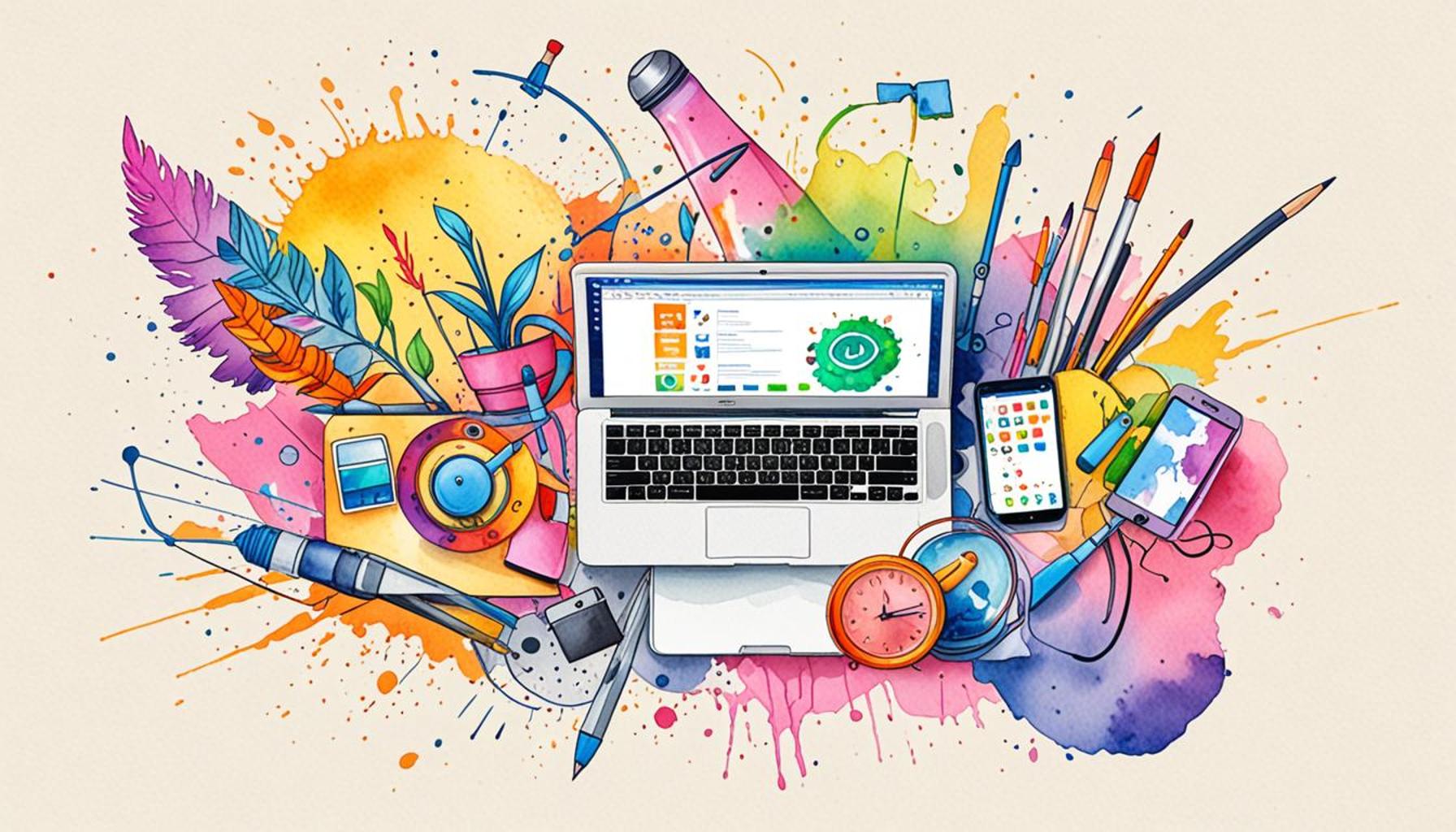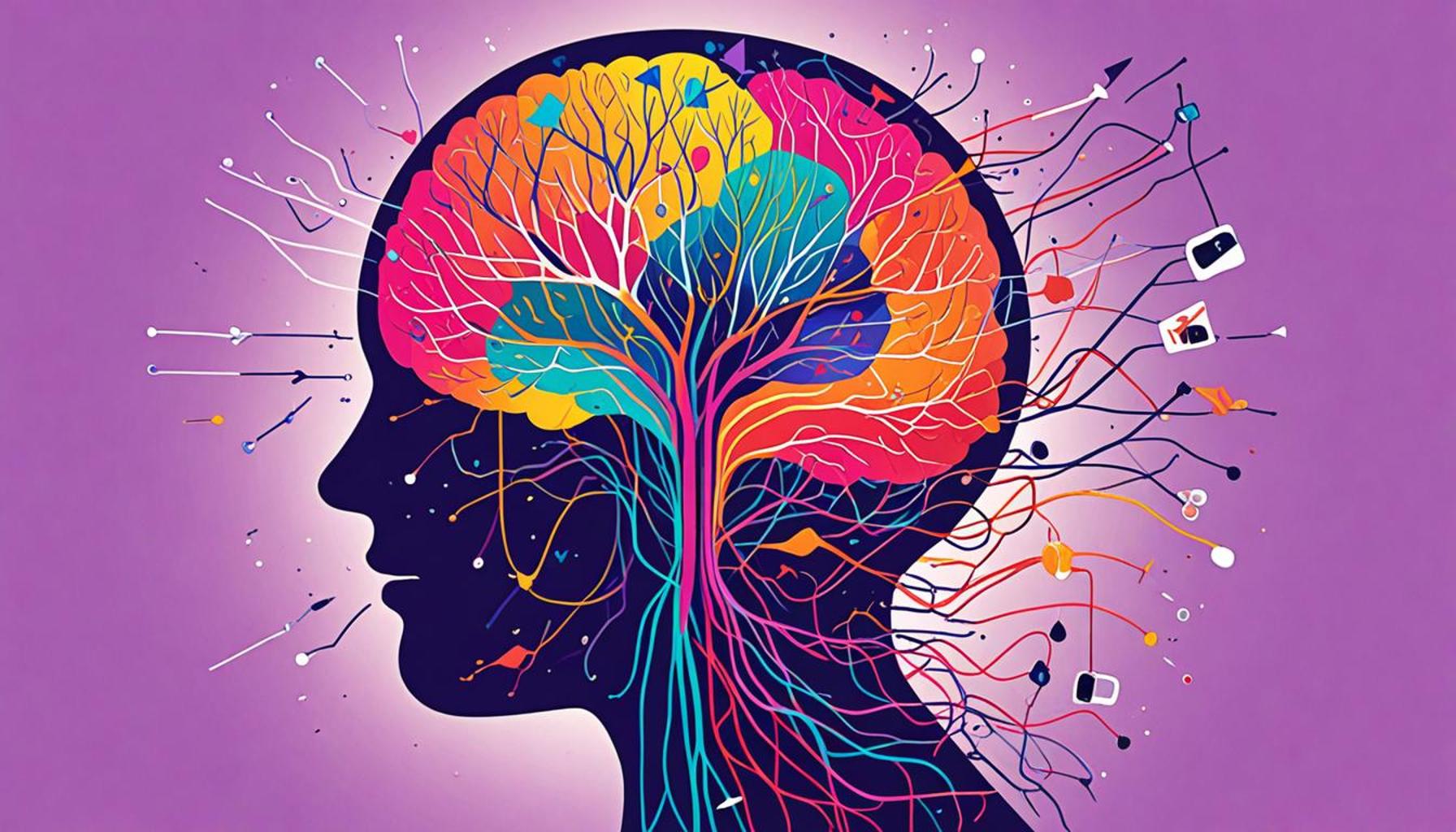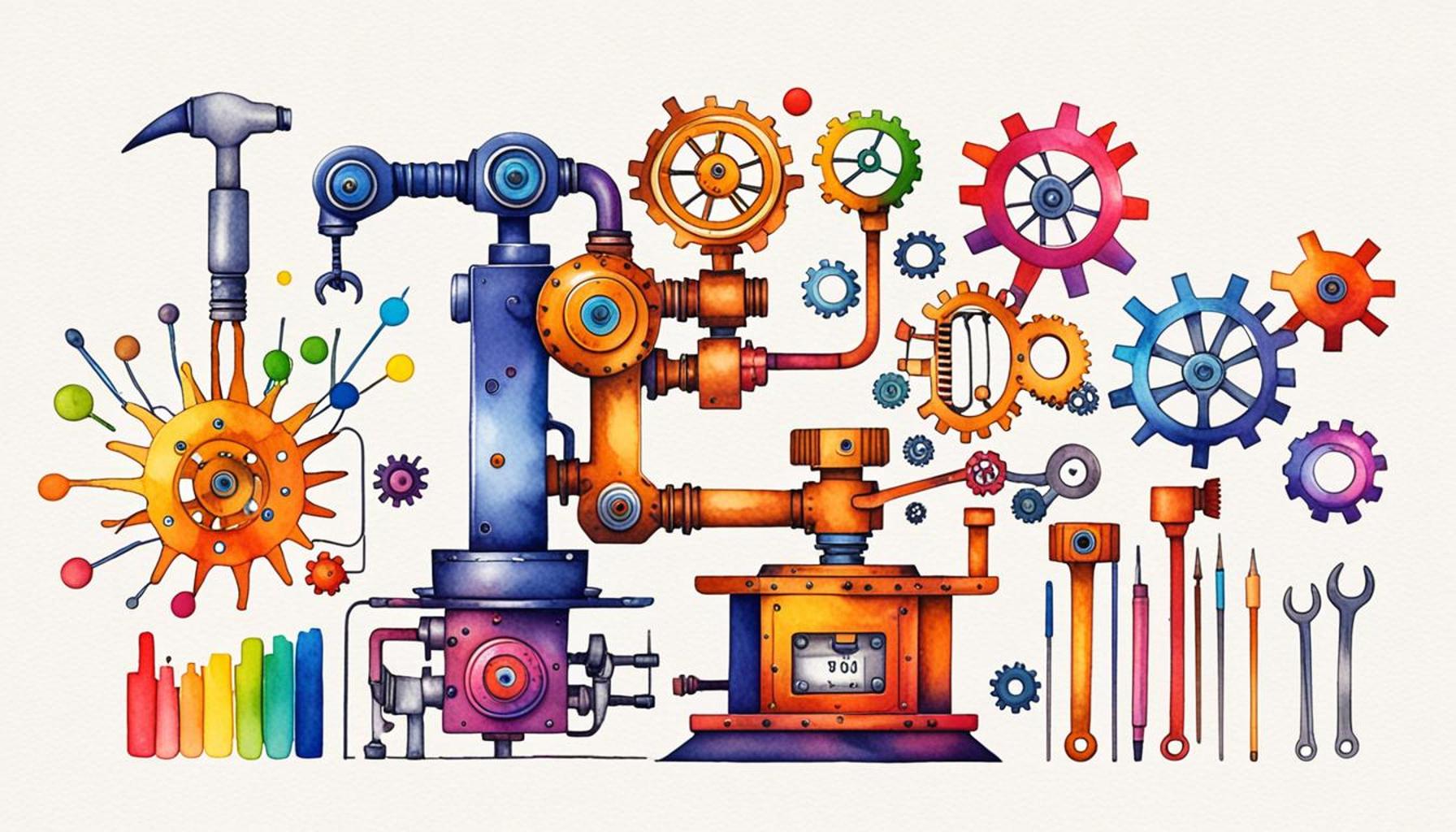Reinventing Productivity: The Importance of an Uncomplicated Digital Environment

The Importance of a Simple Digital Workspace
In the fast-paced digital landscape we navigate today, the spaces in which we work and interact with technology determine not only our productivity but also our well-being. An uncomplicated digital setup has emerged as a cornerstone for maximizing efficiency in both professional and personal realms. This concept emphasizes the importance of creating a straightforward, user-friendly digital experience that minimizes distractions and enhances workflow.
Key Elements of a Productive Digital Environment
Several pivotal factors contribute to the effectiveness of a digital workspace:
- Clutter-free interfaces: A clean and organized workspace reduces cognitive overload, allowing individuals to focus on tasks without feeling overwhelmed. For instance, a simple desktop background and desktop organization can significantly cut down on distractions. Studies have shown that a clear visual workspace can lower stress levels, enabling better concentration on the task at hand.
- Streamlined tools: Combining applications and software to avoid redundancy can simplify workflows. Instead of juggling several tools for project management, communication, and file sharing, utilizing integrated platforms like Microsoft Teams or Notion can create a seamless user experience. This not only saves time but also enhances collaboration among team members.
- Intuitive organization: Implementing a logical structure for files and applications can facilitate quick access to essential resources. For example, using a consistent naming convention and sorting files into easily navigable folders reduces the time spent searching for documents, thereby driving productivity.
Research corroborates the significance of an organized digital environment; a well-structured setup can enhance productivity by 20-30%. This statistic underscores the necessity for both individuals and organizations to critically evaluate their digital habits and environments.
The Ripple Effect on Team Collaboration
The influence of a complicated digital workspace extends beyond individual productivity. When a team faces unnecessary complexities, it can hinder collaboration and impede overall project success. An uncomplicated digital experience not only cultivates effective teamwork but also ignites creativity. In collaborative environments, streamlining communication tools and ensuring that all team members are on the same digital page is crucial for maintaining alignment and driving innovative ideas forward.

Transforming Your Digital Workspace
Embracing an uncomplicated digital environment is increasingly seen as essential for anyone looking to enhance their productivity. By implementing strategies to simplify digital setups, individuals and teams can benefit from improved efficiency, reduced stress, and a greater emphasis on creative thinking. Whether you are working in a bustling office in New York City or telecommuting from a quiet spot in your home, refining your digital workspace can be a game changer in achieving your goals. Let’s explore actionable steps to revolutionize your digital workspace, making it a true hub of efficiency and creativity.
DIVE DEEPER: Click here to learn how to declutter in stages
Creating an Effective Digital Ecosystem
To truly embrace productivity in our digital age, it is imperative to construct an effective digital ecosystem that promotes clarity and fluidity. The stark contrast between a simplified digital environment and a cluttered one can profoundly impact daily workflows and outcomes. As we delve deeper, it becomes clear that the elements contributing to a streamlined digital workspace are not mere suggestions, but essential components for fostering a high-performance culture.
Key Strategies for Simplifying Digital Tasks
Establishing an uncomplicated digital environment involves several strategic interventions:
- Regular Digital Decluttering: Just as physical spaces require periodic cleaning, so too does our digital landscape. Regularly reviewing and deleting unnecessary files, emails, and applications can help maintain an uncluttered workspace. A recent study revealed that the average office worker spends over 30 minutes per day searching for documents and files. Therefore, investing time in digital decluttering can yield significant returns in productivity.
- Utilizing Automation Tools: Automation leads to remarkable efficiency. By leveraging tools that automate repetitive tasks—like scheduling meetings, sending follow-up emails, or tracking project progress—employees can redirect their focus toward more critical thinking and innovation. Research indicates that organizations using automation in their workflows see productivity increases of up to 40%.
- Prioritizing Mobile Optimization: With the rise of remote work and digital nomadism, a workspace that is mobile-friendly is more important than ever. Utilizing cloud-based applications that allow easy access and collaboration on-the-go ensures that individuals remain productive regardless of location. Being able to access critical documents from a smartphone or tablet can significantly enhance responsiveness and adaptability.
Beyond individual productivity enhancements, these strategies fundamentally shift the dynamics within teams, making workflows more transparent and accessible. An uncomplicated digital environment fosters collaboration through clear communications and easily shared resources, which further amplifies teamwork.
Embracing Minimalism in the Digital Sphere
The philosophy of minimalism—prioritizing essential tools and approaches—has gained traction in digital workspace discussions. By minimizing the number of applications and software used, teams can avoid the inefficiencies that stem from switching between tools. A focused approach to selecting technology not only minimizes tech fatigue but actively enhances the user experience. Choosing the right applications, ones that serve multiple functions, can be a game changer in reinventing productivity.
As the importance of an uncomplicated digital environment becomes more evident, organizations and individuals alike must begin to rethink their digital practices. By critically analyzing the tools, processes, and structures in place, the path toward achieving a more efficient and less stressful digital workspace can be clearly charted. Understanding these fundamentals sets the stage for diving deeper into practical solutions that can reinforce a culture of productivity and creativity in the workplace.
Reinventing Productivity: The Importance of an Uncomplicated Digital Environment
As our lives become increasingly intertwined with digital technologies, the demand for an uncomplicated digital environment has never been more crucial. By streamlining our digital tools and resources, we can enhance our productivity and mental well-being. One of the primary advantages of a simplified digital landscape is the reduction of cognitive overload. When users are confronted with fewer distractions, they can focus better on the tasks at hand, which leads to improved efficiency and output.
Moreover, an uncomplicated digital environment fosters better collaboration among teams. Tools that are intuitive and easy to navigate can improve communication and reduce the time spent navigating various platforms. This seamless interaction enhances team dynamics, ensuring that everyone is on the same page and can contribute effectively without the hindrance of complex systems.
Another compelling aspect is the potential for increased creativity. When the digital interface doesn’t overwhelm users, they can freely explore new ideas and concepts without the constant pressure of understanding convoluted applications or interfaces. This attribute is particularly important in creative fields where innovation is key to success.
By embracing simplicity in the digital realm, companies can cultivate a culture of productivity, ensuring that both employees and clients benefit from a more engaging and effective digital experience. The focus must remain on creating environments that make workflows smooth and uncomplicated, paving the way for a more productive future.
| Category | Description |
|---|---|
| Cognitive Load Reduction | Minimized distractions lead to better focus and efficiency. |
| Enhanced Collaboration | Simplified tools improve communication and team dynamics. |
| Increased Creativity | Encourages exploration of ideas without overwhelming interfaces. |
| Culture of Productivity | Creates engaging experiences for employees and clients alike. |
LEARN MORE: Click here to discover decluttering techniques
Revolutionizing Collaboration Through Simplified Communication
In today’s fast-paced digital landscape, effective collaboration is paramount. To harness the full potential of teamwork, organizations must prioritize uncomplicated communication channels. An overabundance of messaging apps, email threads, and project management tools can lead to confusion and lost productivity. By streamlining communication, teams can focus on their core tasks without being sidetracked by the noise that often permeates their digital interactions.
Streamlined Communication Platforms
The rise of collaboration software has transformed how teams communicate, yet many organizations still grapple with ensuring everyone is on the same page. Platforms such as Slack, Microsoft Teams, or Zoom can facilitate quick messaging and video calls, but the key lies in effectively adopting one or two of these tools that best fit the company culture. Research shows that companies with a clear communication strategy can increase employee engagement by up to 50%.
Moreover, it is essential to establish clear communication guidelines. This includes specifying when to use emails versus instant messaging and setting expectations for response times. By doing so, employees can manage their time more efficiently and reduce the cognitive load associated with juggling various conversations and platforms.
Visualizing Workflows for Enhanced Clarity
Alongside communication, implementing visual project management tools can play a transformative role in enhancing productivity. Tools like Trello, Asana, and Monday.com allow teams to visualize their workflows, assign tasks, and set deadlines in an easily digestible format. Utilizing Kanban boards or Gantt charts can provide a big-picture perspective on ongoing projects, making it easier for team members to understand priorities and timelines.
- Visualization Enhances Focus: When team members can see their responsibilities laid out clearly, it fosters accountability. 74% of employees who utilize visual task management tools report improved focus during work hours, contributing to a more productive environment.
- Accountability Through Transparency: Transparent workflows can create a culture of accountability. Team members can easily track project statuses and progress, minimizing the chances of tasks being overlooked. This added layer of visibility ultimately fuels engagement and enthusiasm among employees.
- Adapting to Changing Needs: Visual tools also allow teams to adapt quickly to changes in project requirements. When goals shift, having a centralized, visual reference can ensure that everyone remains aligned, enabling swift pivots in strategies and responsibilities.
As organizations strive for a unified digital workspace, integrating these visual management systems is increasingly vital. They reduce miscommunication and ensure that all team members are working towards the same goals, significantly enhancing collective productivity. In an era where agility is crucial, maintaining a clear visual representation of work can serve as a competitive advantage.
Fostering a Culture of Continuous Improvement
Finally, embracing feedback mechanisms within an uncomplicated digital environment is crucial for ongoing development. Regular check-ins and retrospective meetings enable teams to openly discuss what is working and what requires adjustment. A commitment to continuous improvement fosters a culture where employees feel supported in their efforts to optimize workflows and enhance productivity.
Data suggests that organizations that prioritize feedback are likely to experience a 25% increase in employee performance. By encouraging open dialogue, teams can evolve their practices and tools, leading to a more conducive atmosphere for innovation and creativity.
DISCOVER MORE: Click here to learn about minimalist design’s impact
Conclusion: Towards a Seamless Digital Future
In an era saturated with digital distractions, reinventing productivity hinges on creating an uncomplicated digital environment. The integration of streamlined communication platforms and visual workflow management tools offers a pathway to enhanced collaboration and focus. By minimizing the clutter of multiple communication channels and adopting effective tools tailored to organizational culture, teams can significantly elevate their productivity levels.
Moreover, fostering a culture of continuous improvement through regular feedback mechanisms empowers employees. This commitment not only nurtures individual growth but also cultivates a collective ethos of innovation. Companies that embrace simplicity in their digital frameworks are not just enhancing operational efficiency; they are also promoting a work culture that values transparency and accountability. With data indicating that organizations practicing these principles can experience engagement boosts of up to 50% and performance increases of 25%, the benefits are both tangible and impactful.
As we navigate a rapidly changing digital landscape, it is crucial for organizations to remain adaptable. The future of work hinges on the ability to embrace uncomplicated solutions that foster collaboration, clarity, and responsiveness. By focusing on a seamless digital environment, businesses can unlock the true potential of their teams, paving the way for enduring success and innovation in the digital age. The journey toward reinventing productivity is evolving, and a commitment to simplicity may very well be the cornerstone of that transformation.



